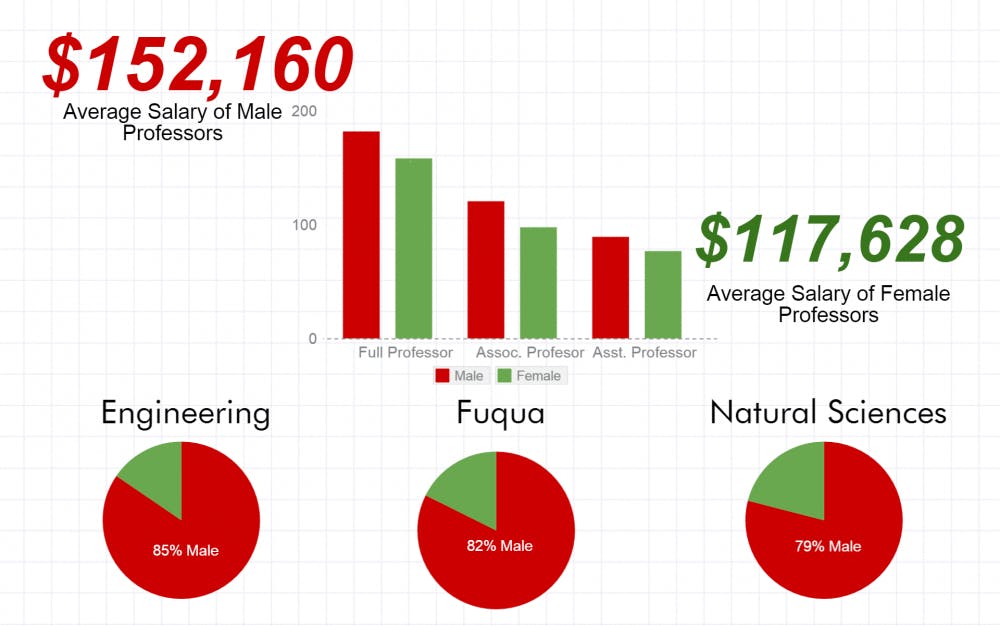Women are underrepresented on the faculty in higher paying departments at Duke.
Although 29 percent of tenure track faculty across the University are women, only 15 percent of engineering faculty, 18 percent of business faculty and 21 percent of natural sciences faculty are women. The University does not publish average salaries for faculty in different departments, but engineering, business and natural sciences departments have among the highest average faculty pay nationally, according to data from the College and University Professional Association for Human Resources.
Partially as a result, the average female tenure track professor at Duke is paid $34,532 less than the average male tenure track professor over the course of a nine-month contract, according to data released by the University to the Department of Education.
“If you look carefully at departments that tend to make higher salary…there’s a lot more men than women,” said Jerry Reiter, Mrs. Alexander Hehmeyer professor of statistical science and chair of the faculty compensation committee.
The committee presented their biannual study of faculty salaries to the Academic Council in April. The committee’s report showed that, controlling for a number of factors including department and time in position, men and women in similar faculty positions are paid roughly equal salaries. Reiter noted, however, that the differences in salaries between departments in the University is significant.
“There are huge differences across departments in terms of salary," he explained. "That’s the market."
Reiter said high-paying departments in the University include economics, business, law and engineering. Those departments are also among the highest paying nationally, according to the CUPA-HR data.
The committee report showed that the proportion of female faculty in the School of Law and in social science departments is similar to the overall proportion of female faculty across the university. But there is a smaller proportion of female faculty in other high-paying departments.
Humanities departments at Duke have the highest proportion of female faculty—45 percent. Nationally, according to the CUPA-HR data, humanities, English and history departments have among the lowest average faculty salaries.
Marnie Rhoads, assistant dean for faculty affairs in the Pratt School of Engineering, wrote in an email that Pratt has higher proportions of women and other underrepresented minorities than the national average among engineering schools.
In a statement, Jim Anton, senior associate dean for faculty at the Fuqua School of Business, wrote that Fuqua also has a higher percentage of underrepresented groups than its peers and is working to add more female faculty.
“We are constantly working to recruit top notch faculty, including women and underrepresented minorities,” he wrote. “In recent years, the percentage of women in our new faculty hires has been well above the percentage across all of Fuqua.”
Guy-Uriel Charles, senior associate dean for faculty and research at the School of Law, and Patrick Bayer, chair of the economics department, did not respond to requests for comment.
Get The Chronicle straight to your inbox
Signup for our weekly newsletter. Cancel at any time.

